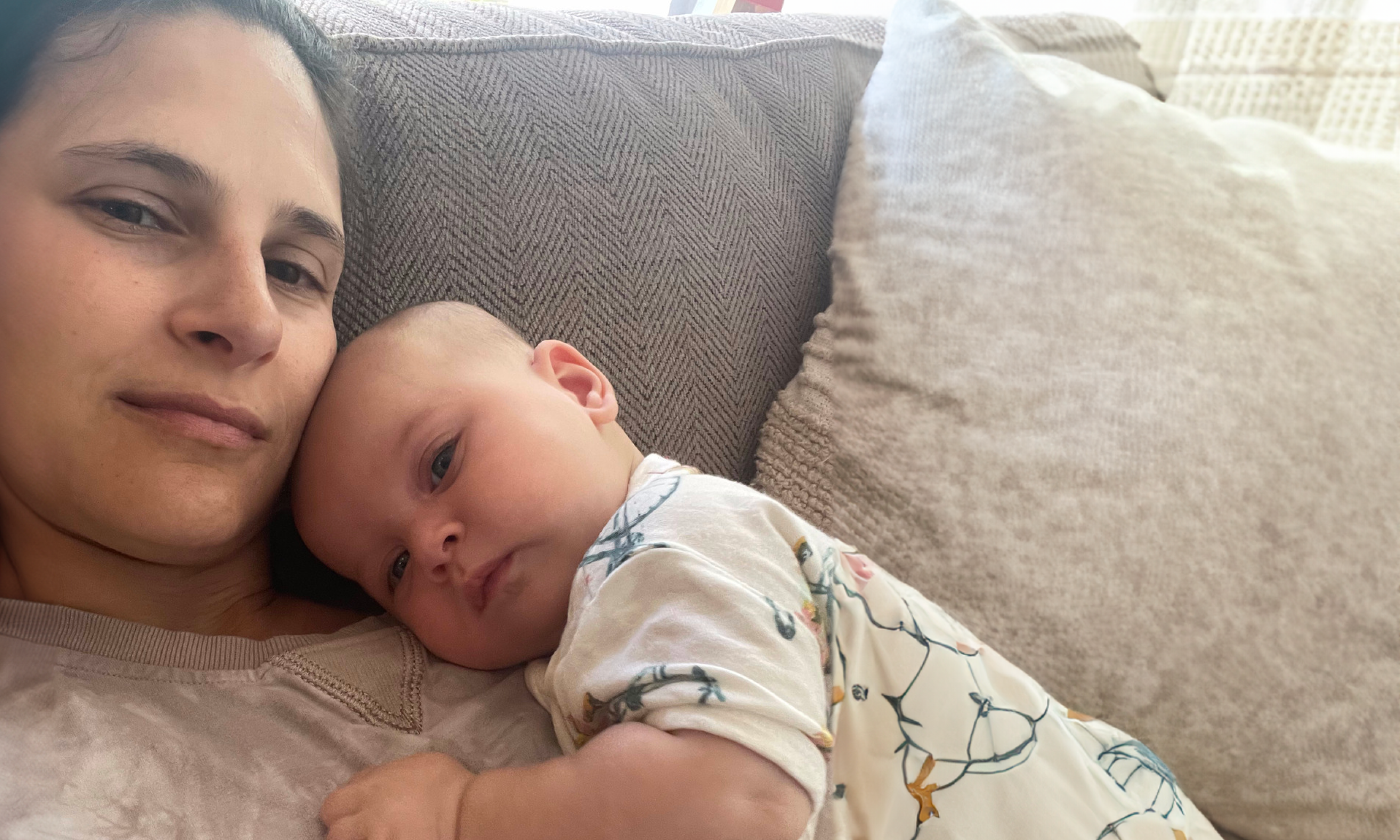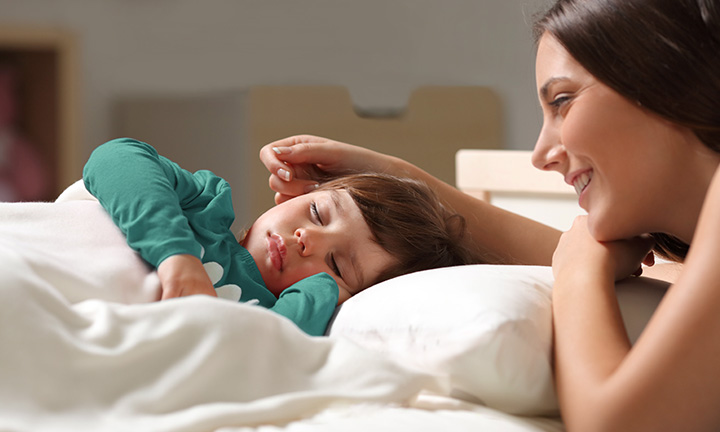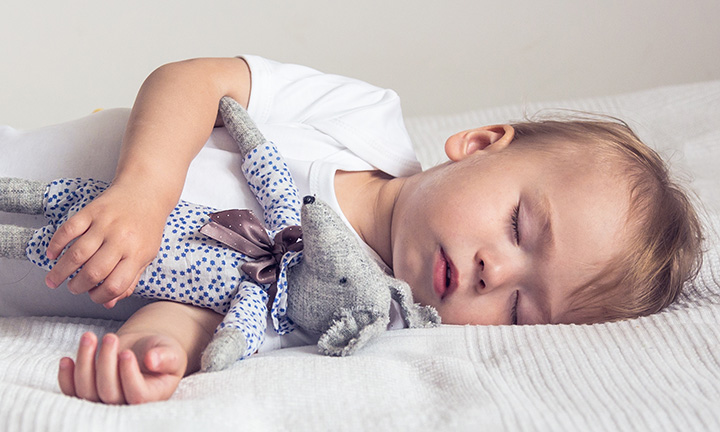
What Are Night Terrors in Toddlers? Signs, Causes & Tips


If your toddler wakes up screaming, confused, and can’t be comforted—it might not be a nightmare. It could be a night terror, a type of sleep disruption that looks intense but usually isn’t harmful.
Here’s a quick overview to help understand what’s happening and what you can do:
What are night terrors? A form of parasomnia that causes sudden fear during deep sleep—not a bad dream.
What do night terrors look like? Screaming, thrashing, sweating, and open eyes—without full awareness.
What causes night terrors in children? Triggers include stress, sleep deprivation, and overstimulation.
Are night terrors in toddlers a sign of mental illness? No, night terrors are not linked to mental health conditions.
How to help: Avoid waking your child, keep their space safe, and try simple changes to their sleep routine.
Want to understand the signs, causes, and remedies in more detail? Keep reading for expert-backed advice and practical tips.
What Are Night Terrors?
Night terrors in toddlers can be confusing and even a little scary to witness. So, what are night terrors, exactly?
Night terrors are a type of parasomnia, which is a disruptive behavior or event that affects sleep, like sleepwalking or talking in your sleep. They are rare but occur most often in toddlers and preschoolers.
The night terrors definition describes them as sudden episodes of fear, crying, or intense movement during sleep. Even though they may look like a child is awake and distressed, your little one isn’t fully conscious. Unlike nightmares, they most likely won’t remember the episode the next morning.
Witnessing a night terror can be upsetting for parents, but it’s not as harmful as it might look. Unlike a nightmare, once the night terror is over, a child will go back to sleep quickly and won’t remember it.
A night terror is usually not a cause for concern or a sign of a deeper medical issue.
What Causes Night Terrors?
You might wonder what causes night terrors, especially when they seem to come out of nowhere. The exact cause is still unknown, but research suggests that they may occur when your child gets caught between deep sleep and wakefulness. During this time, the brain is partially awake, which is why your child might appear alert but seem to have a difficult time waking up or having comfort.
Several factors may trigger night terrors in toddlers and young children, including:
Sleep deprivation
Obstructive sleep apnea
Stress or anxiety
Emotional tension.
These triggers may help to explain the possibility of why kids have night terrors, especially during changes in routine or after a busy, overstimulating day. Your little one may also be more likely to experience night terrors if there’s a family history of parasomnias or if they have another sleep disorder, such as obstructive sleep apnea or periodic limb movement disorder.
Are Night Terrors in Toddlers a Sign of Mental Illness?
It’s understandable to worry when your little one experiences a night terror, but you may be relieved to learn that night terrors in toddlers are not considered a sign of mental illness. Night terrors are usually outgrown by children and rarely occur. While night terrors can look intense, they are generally not harmful and don’t indicate any long-term emotional or developmental issues.
If you’re concerned about your little one’s behavior or any other changes, it may be best to contact a health care professional.
Treatment may be needed if their night terrors cause:
A safety risk
Interfere with their sleep
Aren’t going away in time
Happens more often than usual.
Baby Development Milestones Watching how your baby grows and develops is an important part of parenthood. Keep track of your little one's progress with our baby development milestones articles!
Signs and Symptoms of Night Terrors in Babies and Toddlers
As a parent, it’s normal to ask, “What do night terrors look like?” to watch out for symptoms and understand your little one’s sleeping habits better. Seeing a night terror for the first time may be unsettling. These episodes may suddenly appear and seem to be intense, even though your little one isn’t fully awake and won’t remember what happened afterwards.
For guidance, here’s a quick night terror description list to help you recognize what’s happening. When your child experiences a night terror, they may:
Sit upright in bed suddenly
Scream or shout out in distress
Breathe faster
Have a quicker heartbeat
Sweat
Thrash around
Act upset and scared
Stared wide-eyed.
These are some of the most common signs of night terrors in toddlers and children, but keep in mind that symptoms may vary from child to child. If your little one sleeps in a different room, or you are a deep sleeper, you may not notice it right away, unless woken up by screams or movement.
At What Age Can Night Terrors Occur?
Sleep experts state that night terrors in toddlers can begin as early as 12 months old and may continue up to 12 years old. Night terrors in 3-year-olds through 7-year-olds are especially common during this developmental phase.
That said, every child is different. Some may only experience a few episodes, while others go through a short phase of frequent wakeups. If you’re ever unsure or concerned about what your child is experiencing, it’s always a good idea to check in with your child’s healthcare provider.
The Difference Between a Night Terror and a Nightmare
To understand the difference between a nightmare and a night terror, check out the table below:
Remedies for Night Terrors in Toddlers
If your little one is going through frequent episodes, there are gentle, practical remedies for night terrors in toddlers and children that may help reduce how often they happen—and make bedtime a little more peaceful for everyone.
Here are some tips:
Prioritize sleep. Overtiredness can trigger night terrors. Try shifting to an earlier bedtime or creating a more consistent sleep schedule. A short nap during the day may also help toddlers get the rest they need.
Create a calming bedtime routine. Wind down with quiet activities like reading books, doing puzzles, or taking a warm bath. A dark, cozy, and quiet room can also support restful sleep. Try Pampers Overnight diapers as part of this routine, designed with extra absorbency for more peaceful nights.
Avoid caffeine and evening stimulation. Steer clear of anything that could make it harder for your child to fall or stay asleep.
Make the sleep environment safe. If your child thrashes during a night terror, safety is key. Consider removing sharp or fragile items, securing windows and doors, placing gates near stairs, and avoiding bunk beds.
Reduce stress and emotional tension. Talk to your child if they seem anxious. Identifying sources of stress and offering comfort can help. If needed, a mental health professional may offer additional support.
Offer gentle comfort during an episode. If your child is having a night terror, try to wait it out while making sure they’re safe. You can softly soothe them but avoid trying to wake them up—it might make things worse. Most episodes end on their own within minutes.
Track patterns. Keep a sleep diary for a couple of weeks. If the episodes occur around the same time each night, you might try “anticipatory awakenings” by gently waking your child about 15 to 30 minutes beforehand. This may help disrupt the cycle.
These calming approaches are often seen as supportive natural remedies for night terrors in toddlers. They’re not guaranteed fixes, but they may reduce how often the episodes occur—and help your child feel more secure at night.
When to See Your Child’s Healthcare Provider
Most night terrors don’t require treatment, but there are times when it’s worth checking in with your child’s healthcare provider.
Reach out if:
Night terrors happen often—several times per week
You or your little one isn’t getting restful sleep
The possibility of someone being injured during an episode
The episodes occur frequently in the second half of the night
Each episode is very short—less than one minute
Your child has other symptoms like snoring, mouth breathing, or excessive daytime sleepiness.
FAQS AT A GLANCE
A night terror is a type of parasomnia. Your child may scream, cry, or sit up in bed, but won’t be fully awake. Experts suggest not waking them—they’ll usually return to sleep quickly and won’t remember it.
The Bottom Line
Night terrors in toddlers can be distressing to watch, but they aren’t harmful, and your child won’t remember them. Try not to wake them; most episodes pass quickly.
A calming bedtime routine and avoiding overtiredness may help reduce how often they occur. If night terrors happen frequently or disrupt your little one’s sleep, consult their healthcare provider for guidance.
Want easy tips and rewards while caring for your little one? Download the Pampers Rewards App to earn Pampers Cash and access exclusive offers.







